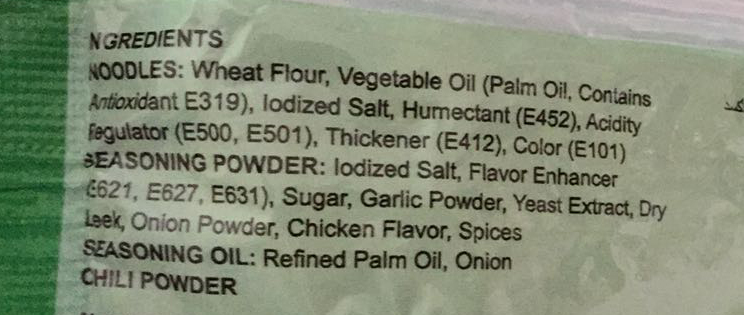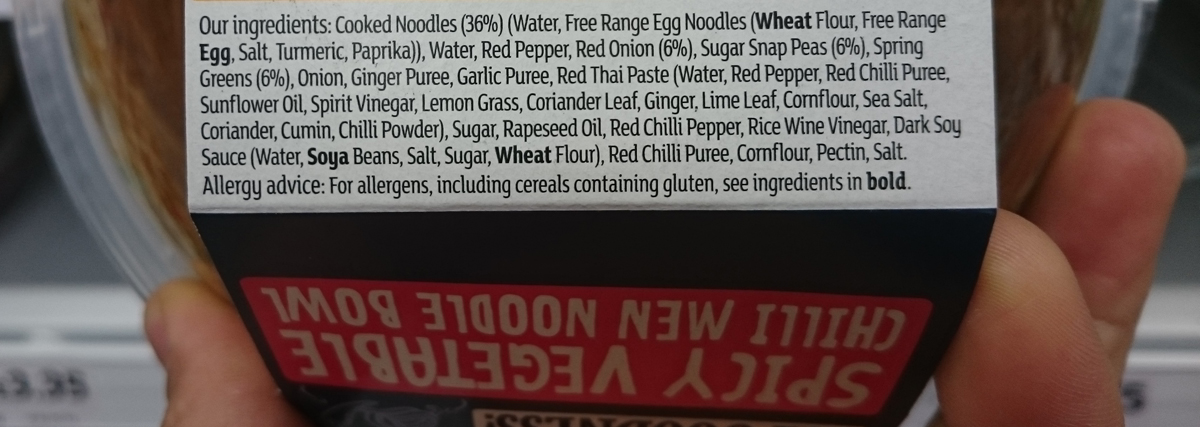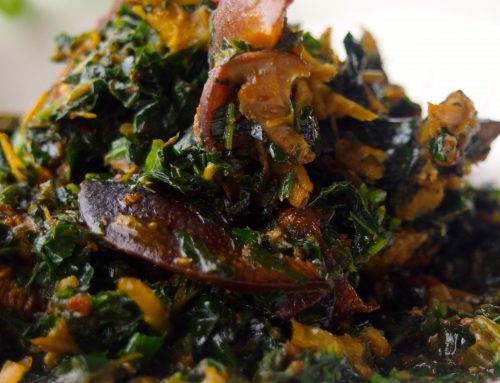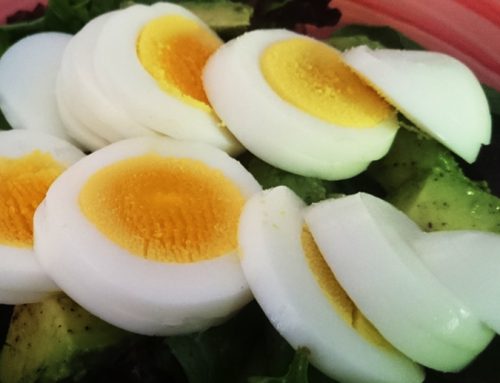I like writing about the things that are good to eat. Where Nigerian food is concerned, this covers most of our traditional foods. It’s much more fun working with those things, I get to cook them for the camera or for analysis. Then I get to eat them, for strictly scientific reasons, of course. Sadly, sometimes I have to speak up about the things we shouldn’t eat which is equally important for a Nigerian diet (or any other) but woefully less fun. This is that kind of article.
I will always advocate eating real natural food, either fresh or with simple processing like peeling or drying. Once food is in a packet, you must read the label to see what’s in it. As my children got old enough to buy snacks in shops away from my influence, I taught them a simple rule to apply when reading the label on a food packet. It is this, “If there is any item on the ingredient list that your grandmother would not recognise as food, don’t eat it.” We call this the Granny Waddafux rule. If you know that Granny is going to say, “waddafux maltodextrin?” or “waddafux soya lecithin” then you can’t eat those things. This is a good starting point for reading labels with a view to healthy eating.
 A friend gave me a packet of plantain chips yesterday, he had a box of them in his car and offered me one as I saw him off after a visit. It passed Granny Waddafux rule easily, the ingredient list has two items; plantain and vegetable oil. (not even any salt) Perfect for an occasional snack. If I were to consider buying this by the box and/or feeding it to children, I would look a little harder, the plantain chips were made in Colombia and the ‘vegetable oil’ is palm and soya that hasn’t been partially or fully hydrogenated, that’s good, but for me to include this as a regular feature of my family’s diet, I would need to know that the soya is not genetically modified. (As it often is)
A friend gave me a packet of plantain chips yesterday, he had a box of them in his car and offered me one as I saw him off after a visit. It passed Granny Waddafux rule easily, the ingredient list has two items; plantain and vegetable oil. (not even any salt) Perfect for an occasional snack. If I were to consider buying this by the box and/or feeding it to children, I would look a little harder, the plantain chips were made in Colombia and the ‘vegetable oil’ is palm and soya that hasn’t been partially or fully hydrogenated, that’s good, but for me to include this as a regular feature of my family’s diet, I would need to know that the soya is not genetically modified. (As it often is)
This sort of thinking is Grandmaster Ninja level 9000 foody-health-nut thinking and let’s be honest, apart from the food-obsessed like me, who has the time, energy or inclination to be analysing food labels to this degree?
Here is a sample ingredient list from a packet of Indomie noodles. Non-food items are in Bold Italics
Noodles: wheat flour (62%), refined palm oil (contains TBHQ), salt, sodium tripolyphosphate, potassium carbonate, sodium carbonate, guar gum, riboflavin. Seasoning Powder: Salt, Sugar, monosodium glutamate, disodium inosinate, disodium guanylate, garlic powder, onion powder, yeast extract, artificial flavor, pepper, silicon dioxide. Seasoning Oil: Refined palm oil (contains TBHQ), onion. sweet soy sauce: sugar, water, salt, wheat, soybean, sesame oil. Chili Sauce: Chili, water, sugar, salt, tapioca starch, acetic acid, citric acid, (these two could have been made natural by using vinegar and lemon juice but industrial versions are cheaper) herbs, monosodium glutamate, disodium inosinate, disodium guanylate, flavors, sodium benzoate & sodium metabisulphite (preservatives). Fried onions.
It’s pretty obvious that there are many things here that you wouldn’t walk into a market or grocery store and ask for. Can you imagine it, just shopping for dinner, you pick up a chicken, a tuber of yam, some greens and 20 grammes of disodium guanylate?

Bad label, lots of E-numbers, I got as far as E319 which is TBHQ. (see below)
Rather than try to get everybody invested in understanding everything about food labels, in this article, I’m just going to call out some of the major baddies. The sorts of ingredients that deserve protection prayers, “any carcinogen fashioned by the forces of evil against you shall not enter your kitchen!” sort of thing. . .

This is a good label, no chemicals, no strange items
For the sake of clarity, DON’T EAT THE FOLLOWING!
Hydrogenated Vegetable Oil. Or Partially Hydrogenated Vegetable Oil. .AKA .Trans fat.
This product is produced by an industrial process that solidifies vegetable oil making it a cheap alternative to butter and extending its shelf-life. It has been banned in 6 European countries and even in the USA, where large corporations have too much influence over food regulation policy, the FDA have given companies until 2018 to remove it from all foods. It has been strongly linked to heart disease.
High Fructose Corn Syrup
Abbreviated to HFCS, sometimes called ‘corn sugar’ and found in many packaged foods and sweet drinks, this sweetener has a bad reputation. It is created by chemically processing corn and is mostly found in the United States. It is believed by many to be the single largest single contributor to the American obesity epidemic. I’m not sure I’d necessarily go that far myself on the grounds that there are many things wrong with the average person’s diet and/or lifestyle in the U.S.A. One must also consider that other countries (including nearby Mexico) that largely don’t use HFCS also have widespread obesity issues.
There are a number of ‘scientific’ articles that suggest that HFCS is as healthy as plain sugar. Sadly, if you have enough money, you can get your own ‘scientific’ studies to show whatever you want them to. There were many ‘scientific’ studies sponsored by the tobacco industry that ‘proved’ that smoking cigarettes was not detrimental to health some years ago.
I still it think has no place in a healthy diet for the following reasons.
- The chemical process that creates it is known to leave traces of nasties behind (like mercury)
- It is a really cheap alternative to sugar. This means that it tends to show up in large quantities and in foods (or food-like substances) that are designed for maximum profit with no thought given to health. It is an easy way to identify junk.
- Any conscious effort to eliminate HFCS from a diet will almost inevitably lead to lower sugar intake and that’s a good thing for most people.
TBHQ (Tertiary butylhydroquinone) and friends
This chemical is used to prevent oxidation of packaged processed foods, especially fats. (e.g. palm oil) It tends to show up as part of a chemical gang including propyl gallate, BHA and the notorious BHT (butylated hydroxyanisole and butylated hydroxytoluene respectively) These gang members are all known to the police (regulators) and there are quite low limits imposed on the food industry but they are permitted in food despite being known to cause cancer in animals and aggravate ADHT in humans. Apply Granny Waddafux rule, avoid them!
One last thing. I’m not a fan of any artificial sweetener like acesulfame K, aspartame, saccharin, sorbitol, sucralose, stevia and xylitol. There are many reasons for my dislike of these. Some have been shown to be carcinogens while all seem to amplify the sweet tooth of anybody taking them. In my experience, the more people use sweeteners, the more they want sweet things. It is also very difficult to get good science on these things. They are a huge business, largely due to their use in soft drinks like Coke and Pepsi. Each sweetener manufacturer spends big bucks sponsoring ‘scientific’ studies that either ‘prove’ their version is safe or prove that their rival’s is not. There is a story about how Stevia, which is arguably the best of the lot was blocked from entering the U.S. market for years by the FDA under pressure from the manufacturers of Nutrasweet (aspartame).
Despite all this, as a nutritionist I have to balance the harm from the possibility of long-term issues like cancer and organ failure suggested by studies on artificial sweeteners with the more imminent problems like diabetes and obesity that come from overloading on natural sugars. I can accept sweeteners as a transitional measure, a bit like a smoker’s nicotine patch to help with training your taste-buds to require less sweetening. A progressive reduction in sweeteners, either natural or artificial will make your body adjust and need less.
Wetin you dey chop? (Seriously! You need to know!)
 Major Abs’ Takeaway
Major Abs’ Takeaway
It is always better to eat natural foods as created by nature.
If the need for speed or convenience forces you to eat processed and packaged foods and drinks, then you must always read the label.
Try to avoid any packaged food that includes obvious non-food items and never eat any of the items on the list above.
Finally, if I hear of you (yes, you) feeding any of the above to a child, I, Major Abs, will come and visit you with a big stick! Jokes aside, growing children are much more at risk from the nasty effects of these food additives and should be protected from them.







[…] 80-20? Sounds really technical but it can be simplified. It’s easier if you have a month’s eating diary to hand but if not, just make a list of the ‘bad’ things you eat. Any empty calories like sweet drinks, any processed, packaged non-whole foods, overly starchy foods like white bread, swallow, pasta, alcoholic drinks, added sugars, sweeteners, anything Granny wouldn’t recognise (read this article). […]
[…] including TBHQ, (I will write about food additives and Nigerian regulation later** As promised, click here) and sugar-loaded drinks can lead to poor health in some […]
Our kids in universities should read this…
[…] truth. The industries that make billions selling sweeteners, heavily processed carbohydrates like HFCS (Click for more info) GMOs and other things detrimental to health, invest heavily in pseudo-science propaganda to promote […]
[…] eat anything your grandmother wouldn’t recognise as food” (I taught this to my family as ‘Granny Waddafux rule’ […]